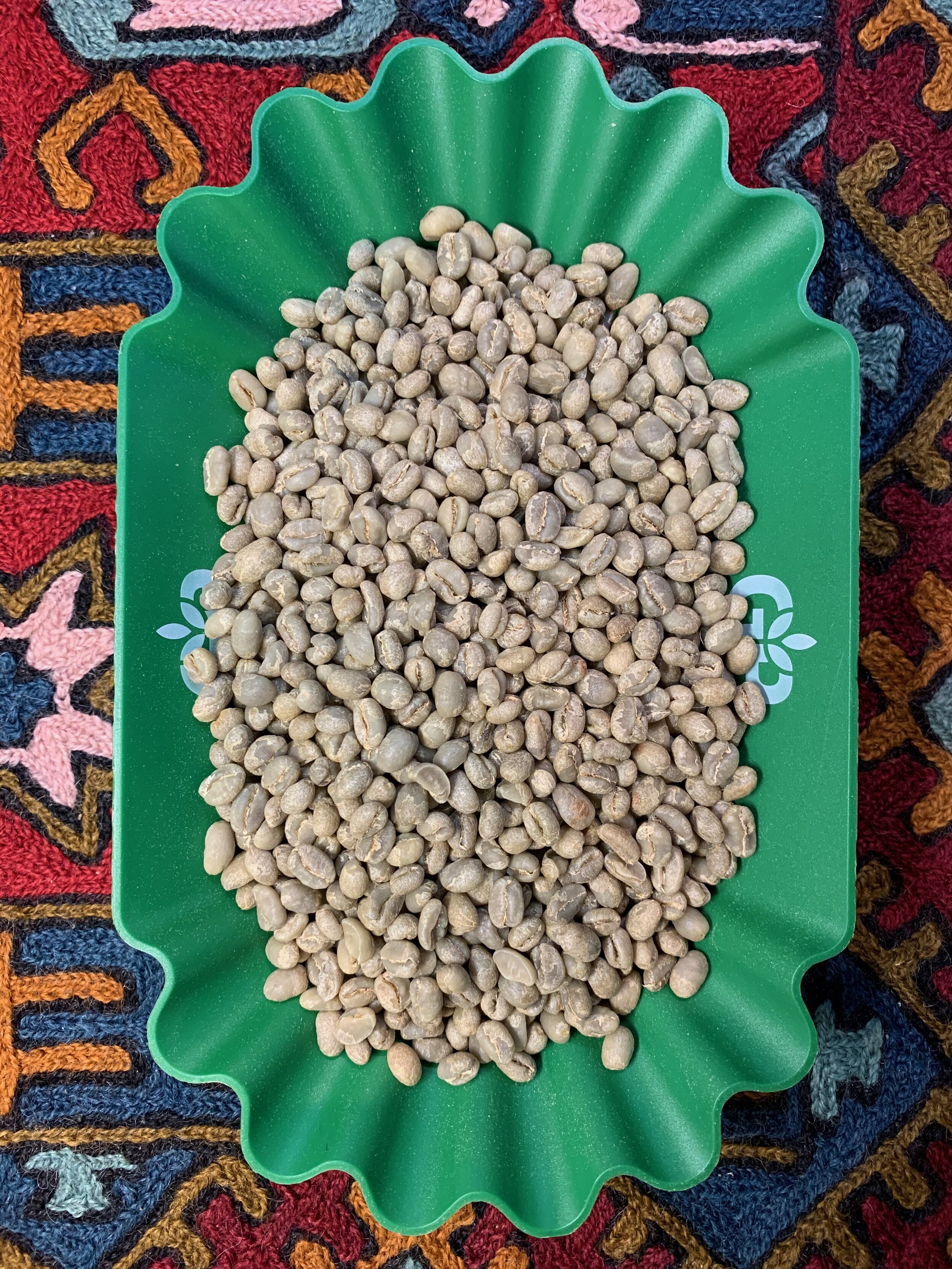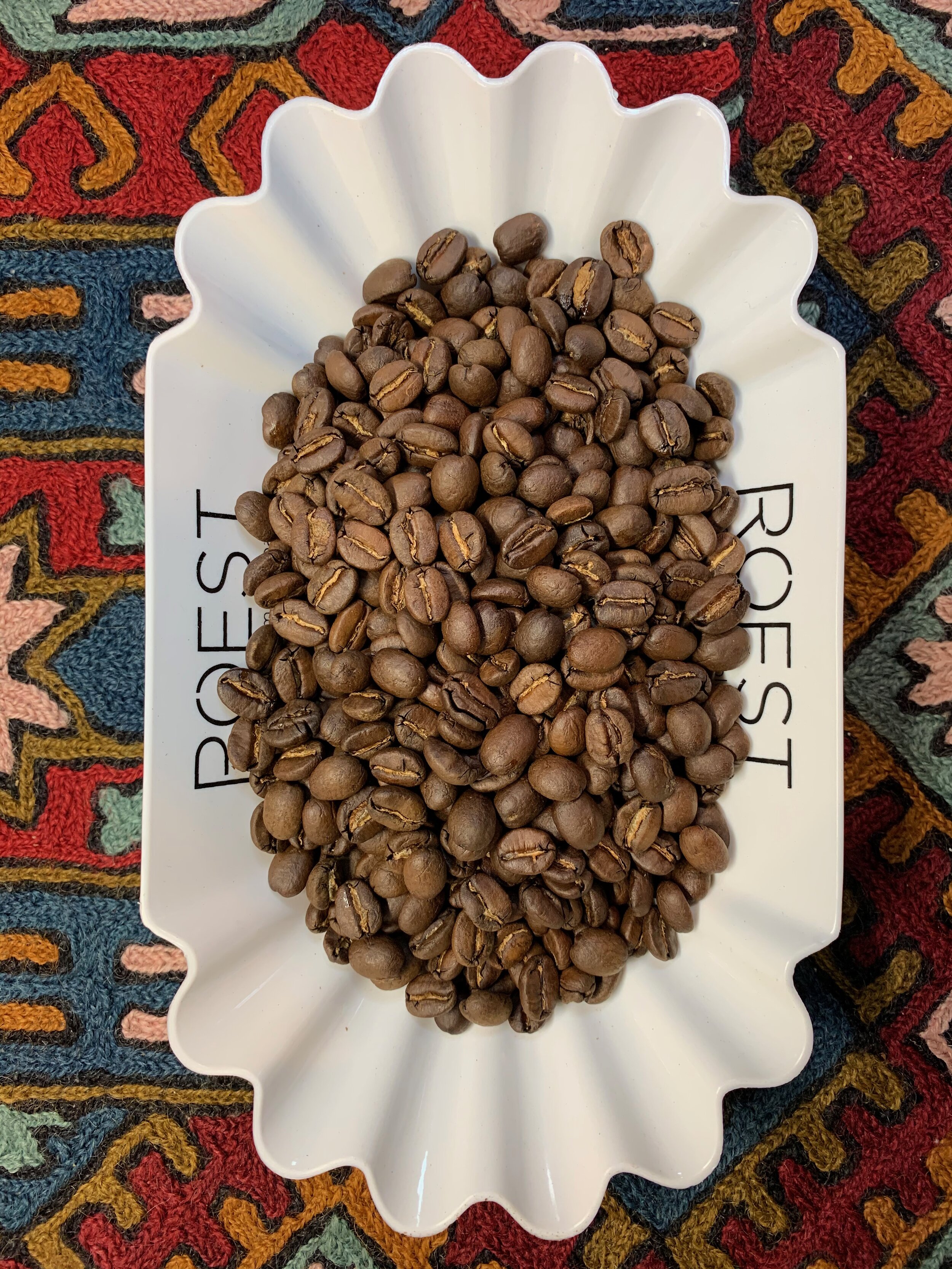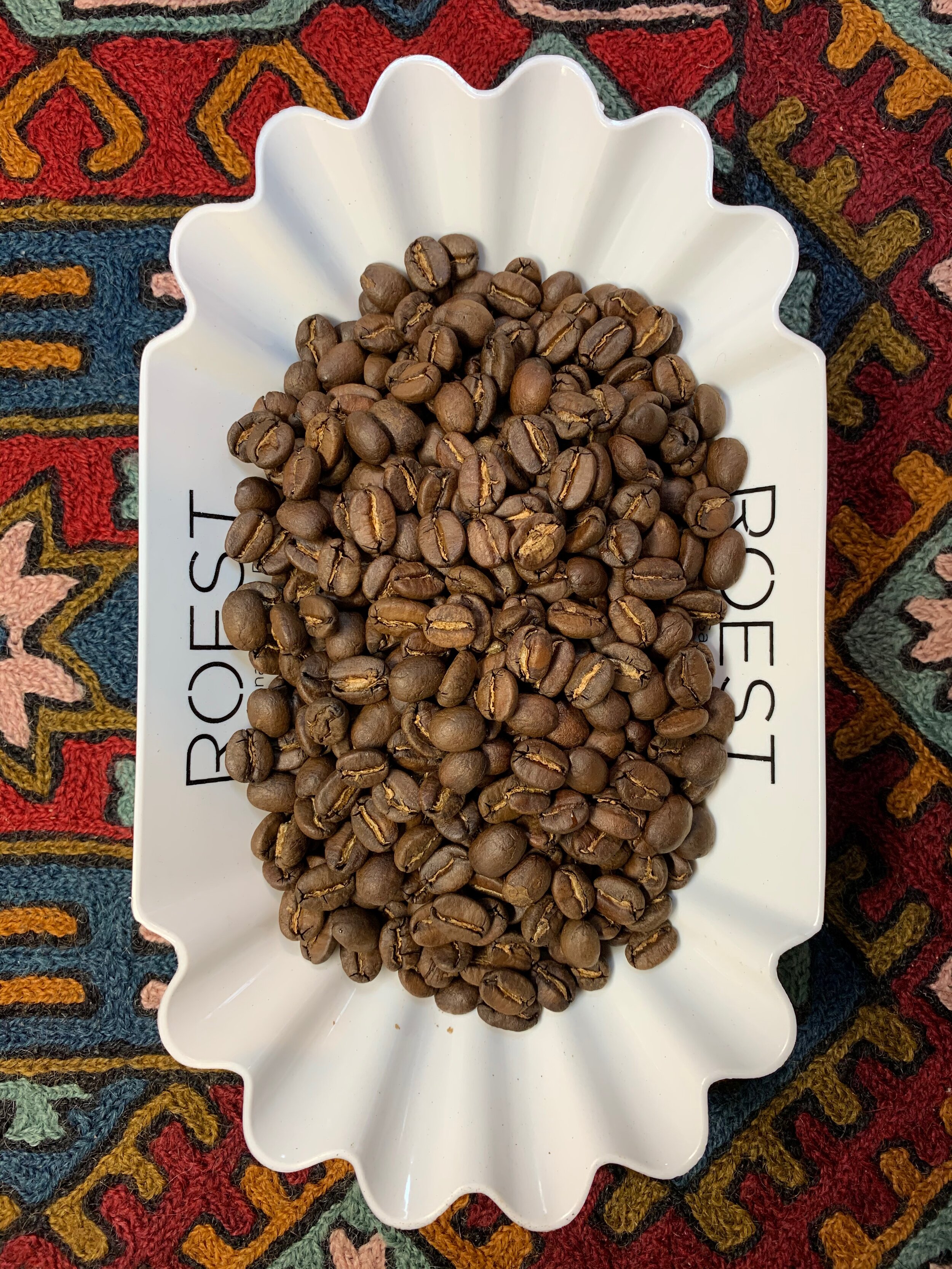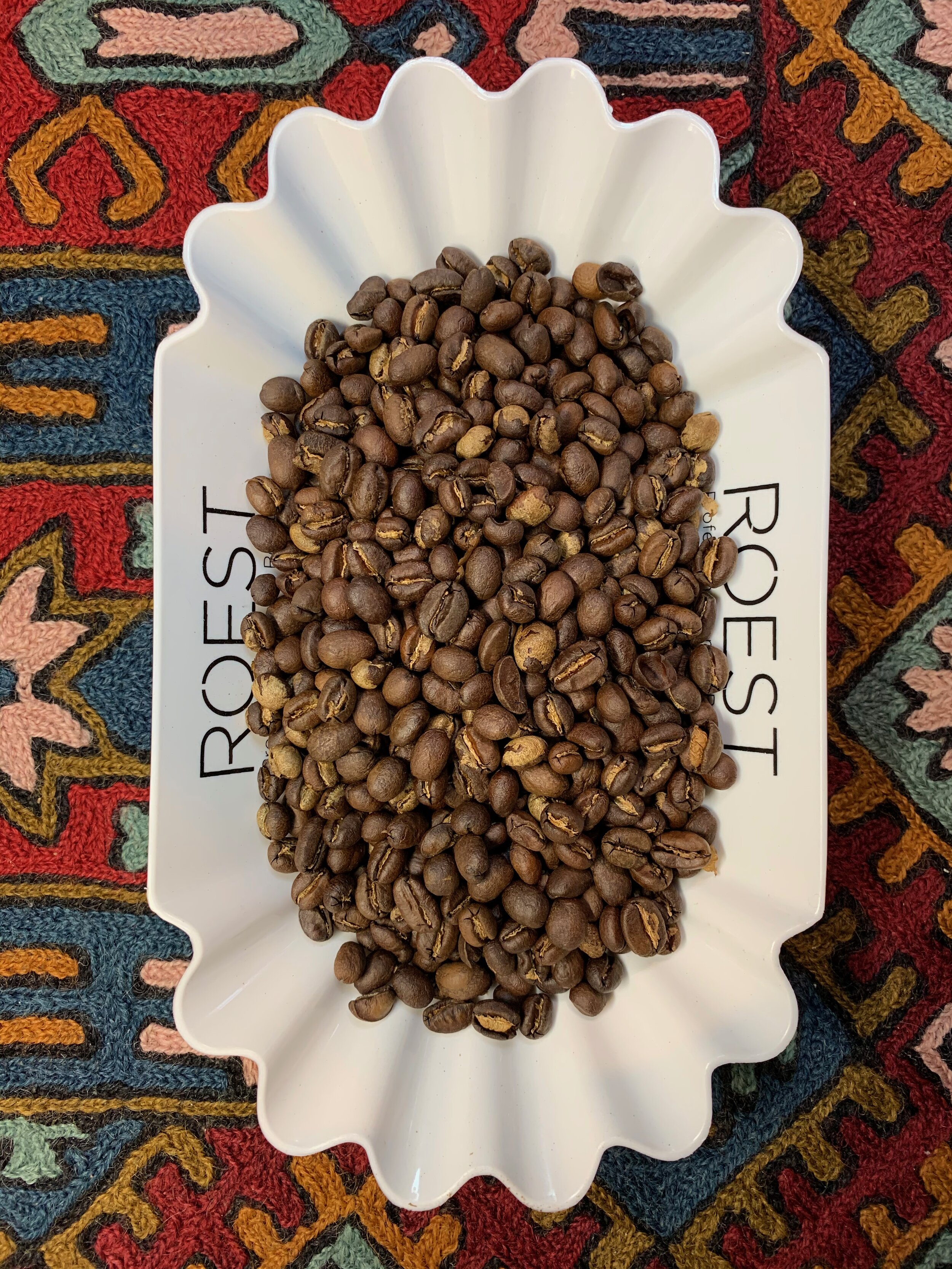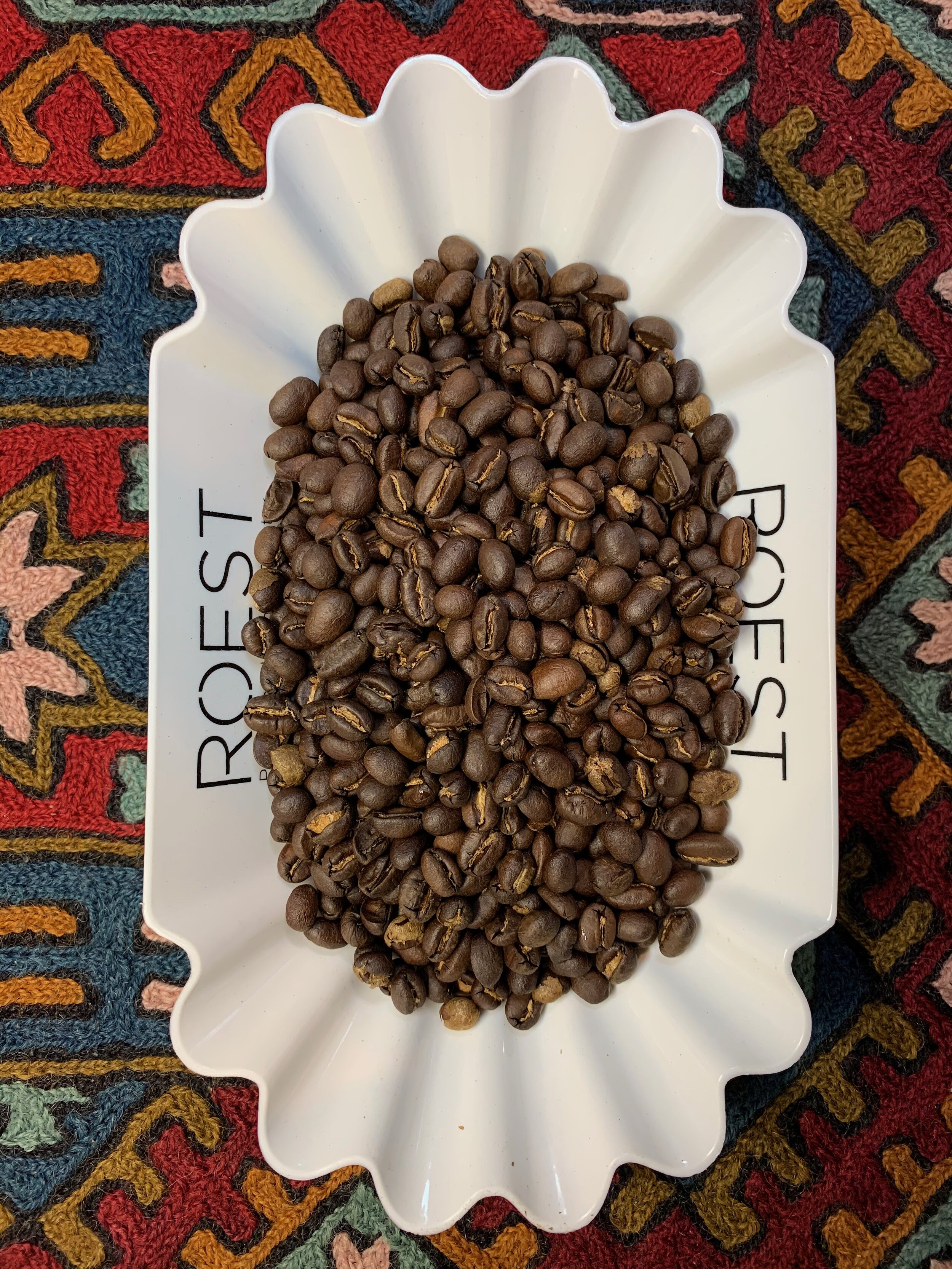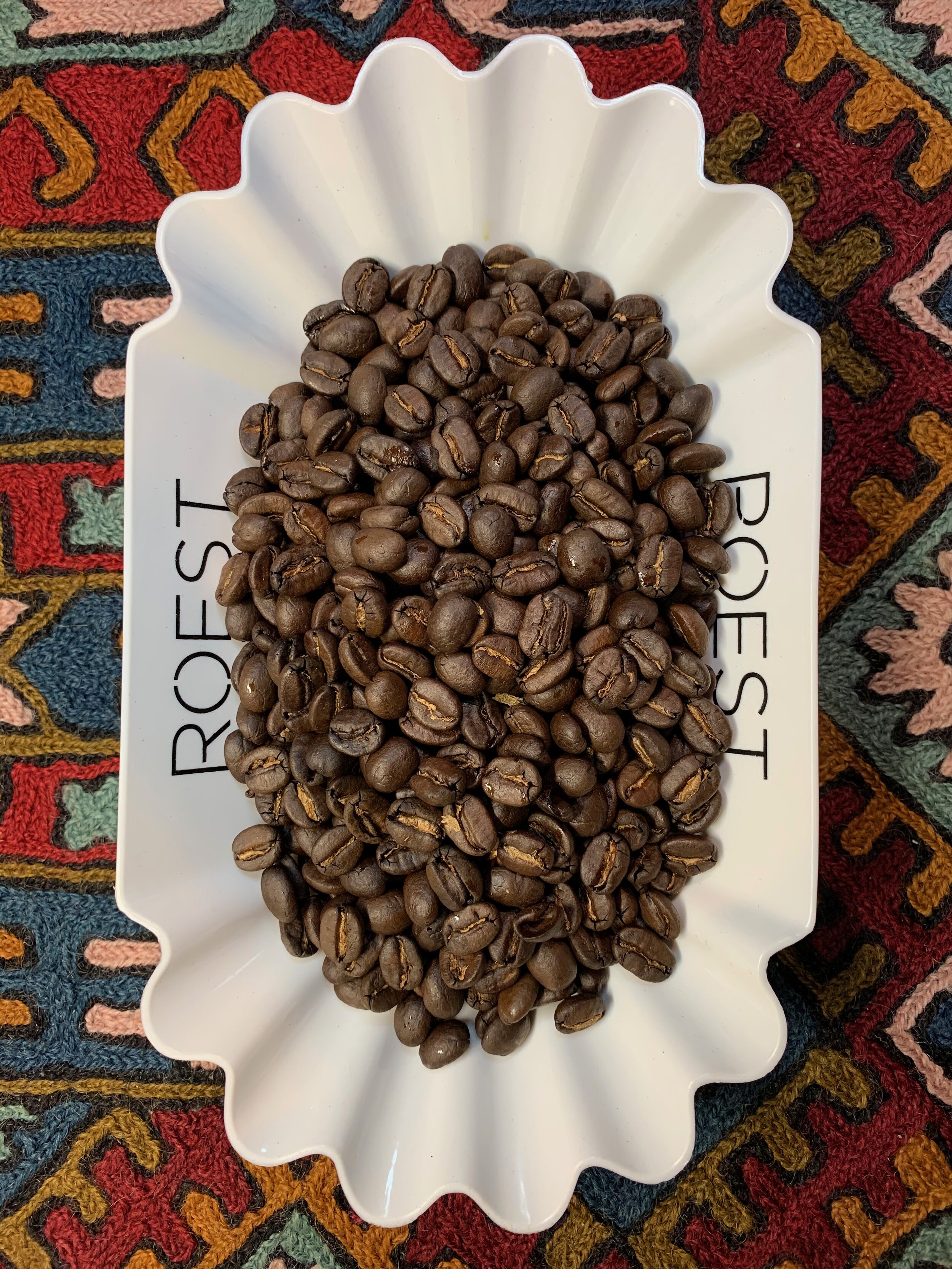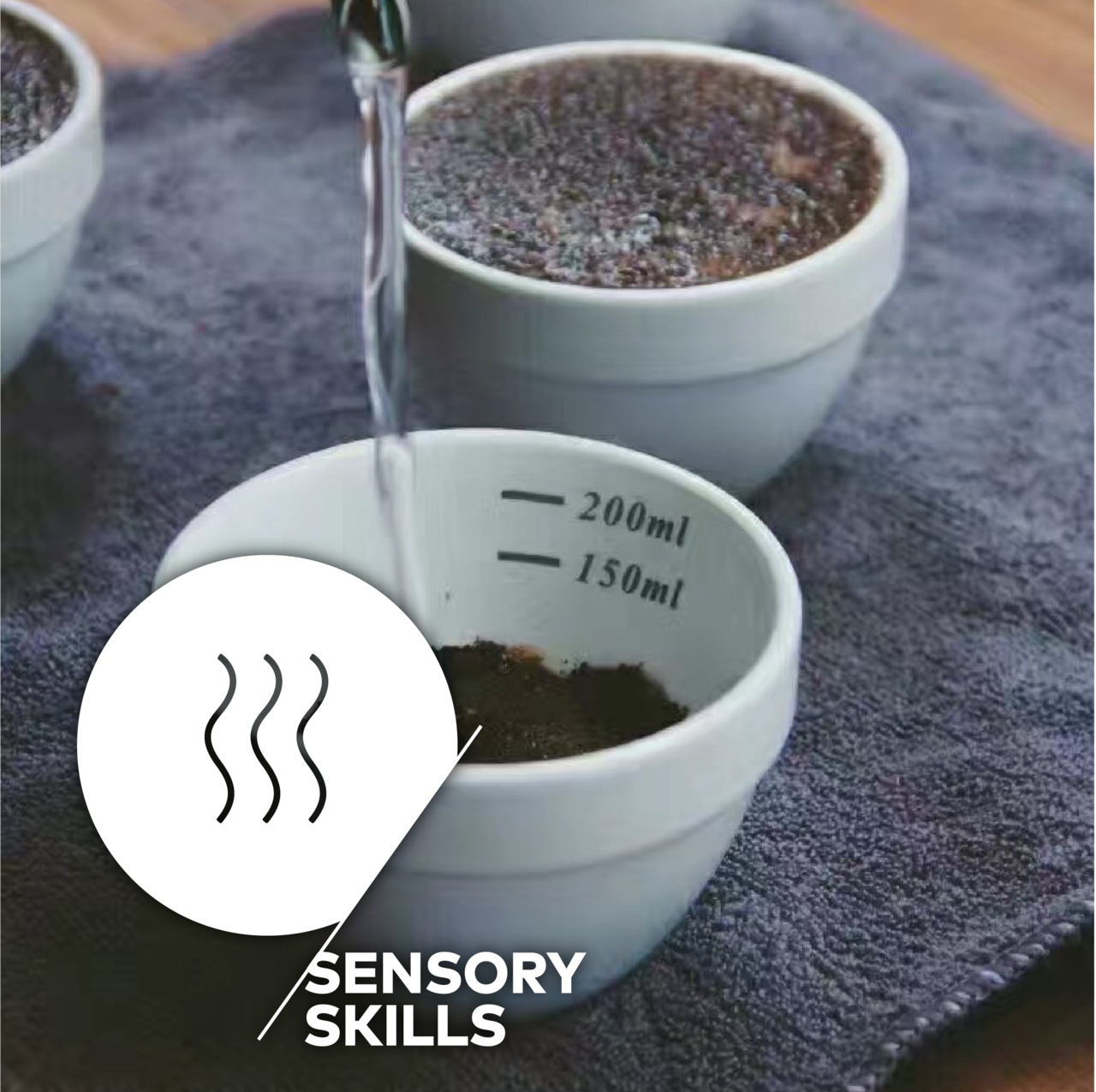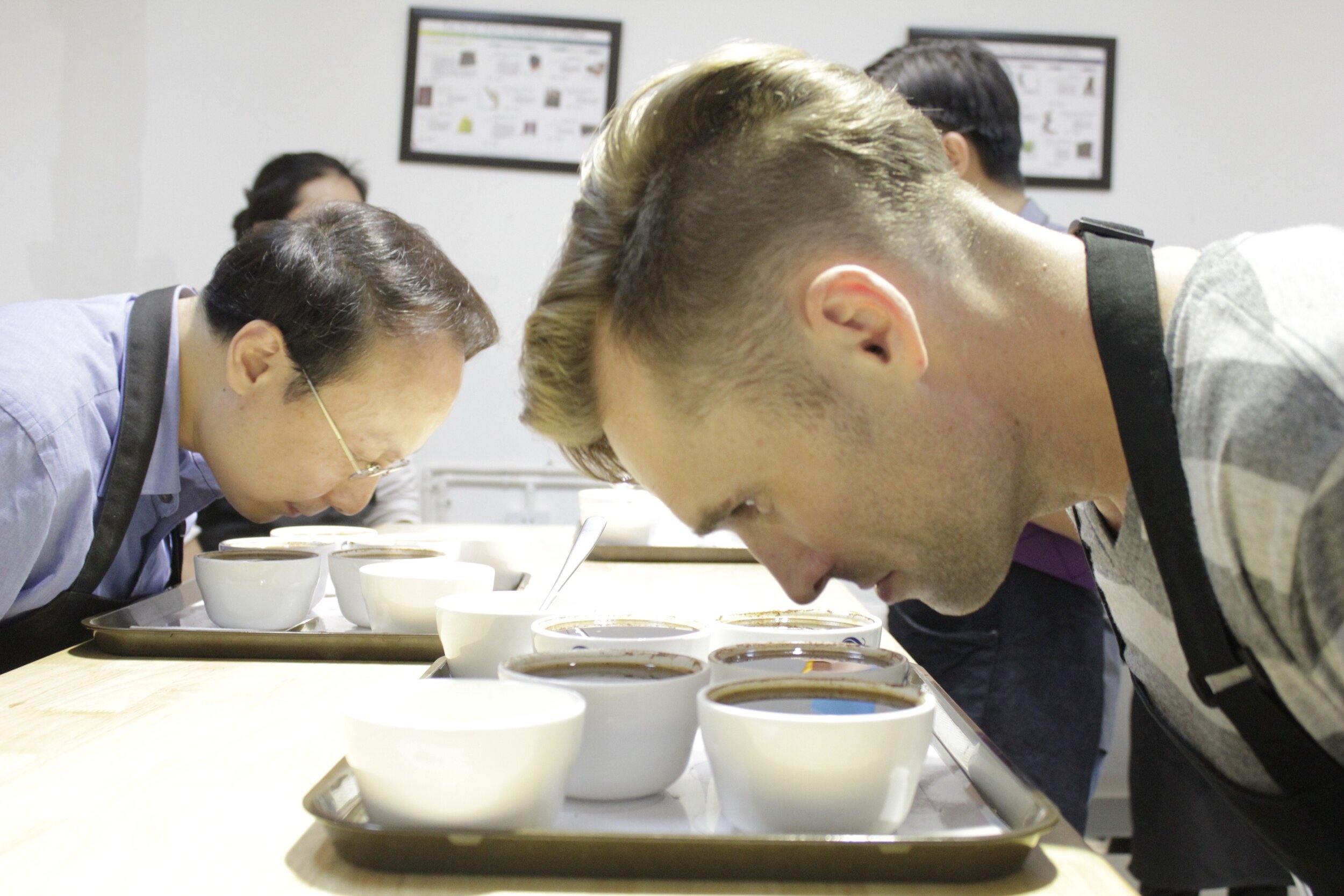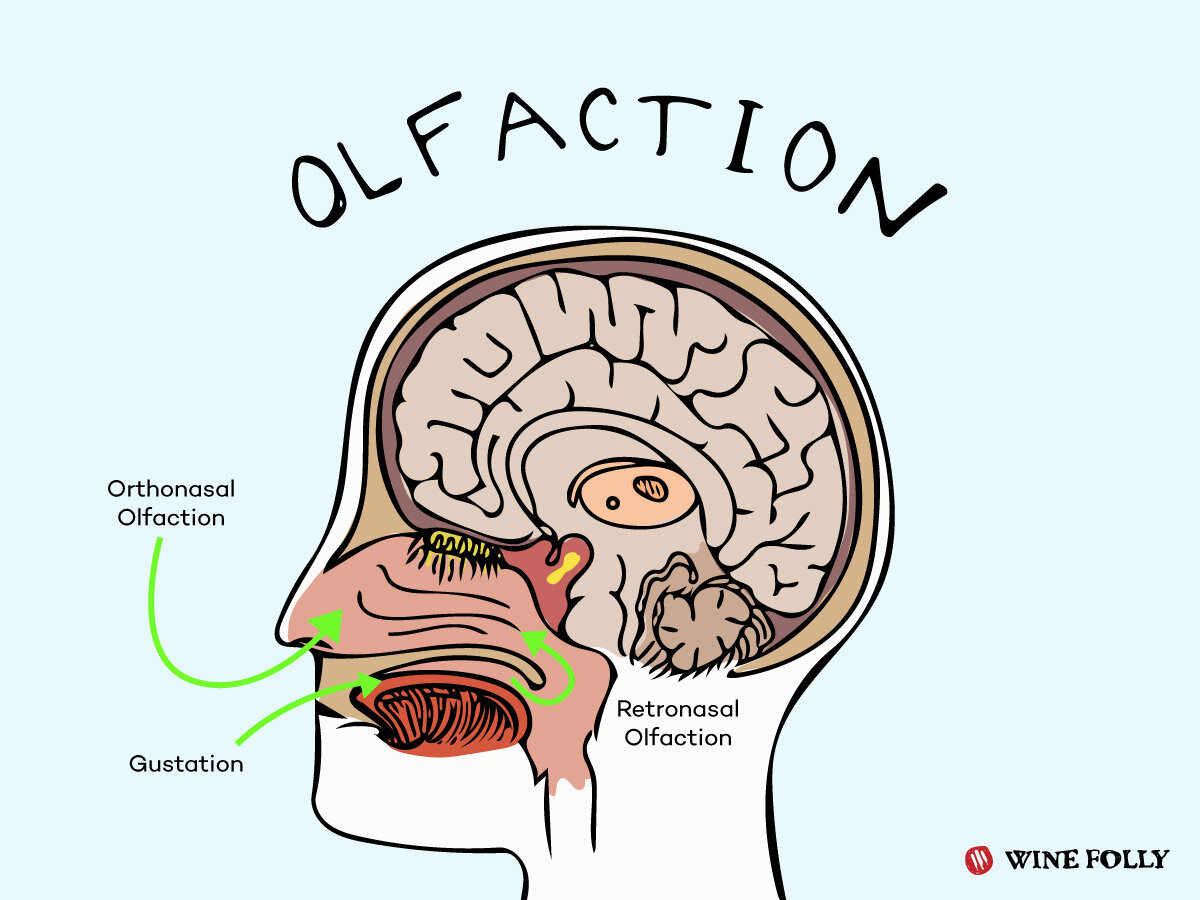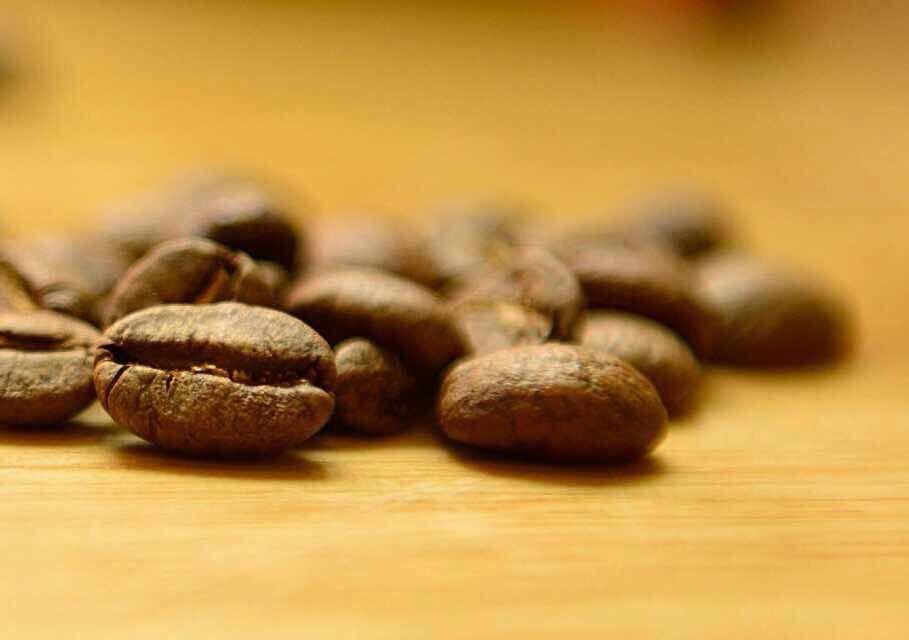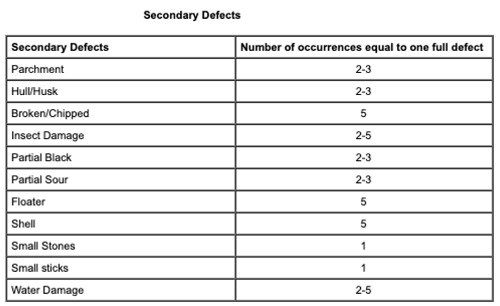Not all coffee is created equal.
Only some coffee should be roasted dark.
Not all coffee should be roasted dark.
Hi, my name is Adam. After working with specialty coffee for over a decade, I must confess: I love properly dark roasted coffees. I do NOT love burnt coffees. I love richly caramelized dry distillation flavors.
As I write this article I am thoroughly enjoying a Kenyan Peaberry coffee from the Gura region of the Othaya Coffee Cooperative. It is rich, smooth and spicy with a bold body that warms me on this cool wet winter morning. The sweet toasted sugars remind me of the overly baked edges of a peach cobbler.
I am aware that many “specialty coffee professionals” would only roast this fine peaberry coffee medium-light. When I roast it lightly, I certainly can accentuate its bergamot Earl Grey floral qualities, with lime like acidity, but that is only one face of this multifaceted coffee. And honestly, when roasted light, this specific coffee is rather light and tea like. It is lacking in full luster.
If you are a coffee roaster, I want to help you properly explore the darker regions of your coffee roasting experiences. There is so much potential to unleash with omni-roast levels.
Here, in this article, let’s give permission to the specialty dark roasters within a framework of discovering those coffees that can stand the heat and those that cannot, so that we develop properly dark roasted coffees. If you are a coffee roaster, I want to help you properly explore the darker regions of your coffee roasting experiences. If you are a coffee fan, then perhaps we can help you to find a new and improved solution to enjoying dark coffees.
Caveat Emptor - Buyer Beware the Dark Roasted Realm.
Beware large coffee companies owned by shareholders which purchase old, defective, low quality, insect damage ridden green coffee with the thought, “we will dark roast it and no one will know the difference!” This is easily spotted by the big brands who dominate the best places on grocery store aisles and charge lower prices than local artisan roasters who are privately owned. They boast of shelf life far beyond the standard 3-4 weeks recommended by all artisan professionals.
Beware pre-ground dark roasted coffees as they will oxidize faster. Oxidation is natural to all coffees and all pre-ground coffee will oxidize faster than whole bean. Dark roasted coffee bean fibers have been even more deeply roasted and exposed, thus they are more fragile to oxidation. Oxidation causes flatness, bitterness and boring-ness : ) . In a word dark roasted coffee will go stale even sooner than light roasted coffees. So find it fresh from a local roaster.
Beware local roasters who dark roast everything with the belief, “people like it dark so we will roast everything dark.” While there is a place to build your brand on “Dark” and “Bold” there is no place for dark roasting every coffee bean that rolls into your roastery. I will share a story now to enlighten the what and why behind dark roasting some coffees and not others.
Discovering Your Dark Roast Sweet Spot
A good friend of mine is a coffee importer. His name is Francis. He works directly with coffee cooperatives and communities in Kenya which have a direct positive impact for long-term business development. The motto of his company, Jamii Coffee, is, “If we can’t touch the farmer, we don’t touch the coffee.” I love it!
After Covid-19 hit the global coffee market worldwide, Francis (like all other green importers) was left with a dilemma. His stock of green coffee suddenly wasn’t selling, because roasters lost contracts, because local businesses and offices were forced to close. While large businesses, grocery stores and online retailers were able to continuing growing in sales, most of the local and private companies served by Jamii Coffee were forced to close temporarily or permanently.
Green coffee ages, albeit slowly. Under proper conditions, most green coffees have a stored shelf life of 18-24 months after harvest. Some high density, well cared for and properly processed coffees can be enjoyed well beyond 24 months. When we looked at the extra stock from 2018 and 2019 we were faced with a question - what to do with all of the warehoused coffee while the new 2020 crop is on a boat coming to the USA? I setup a highly controlled roasting experiment with 4 different coffees all roasted at 3 distinct levels to explore the inherent potential in the 2018 and 2019 coffees. Afterwards we analyzed them together and compared results.
The results from light to medium to dark roasting on 4 different Kenyan coffees was striking!
The 4 coffees used for this experiment were all wet processed Kenyan coffees grown at high elevations. Samples of 120g were pulled from each: Kenya Tamabaya AA (2018), Kenya Tambaya AB (2018), Kenya Gatugi AB (2019) and Kenya Gura PB (2019). AA is the largest bean size, AB is slightly smaller, while PB stands for peaberry, the smallest screen size.
All 12 coffee samples were roasted on my ROEST S100 professional sample roaster using a strict environmental roasting program, which means that they underwent the same process of heat application, air flow, etc. The Nordic roasting profile was used due to its strong application of heat for efficient transfer into the high elevation, dense Kenyan coffee. Upon first crack I took manual control to ensure each coffee could ease through first crack (light) or just past (medium) or mid-way to second crack (dark). Let’s break down each coffees ROEST experience when put to the test of heat and dark roasting.
First, Kenya Tambaya AA
I suspected, and soon confirmed, that the Tambaya AA would roast the fastest. AA beans are large and beautiful when roasted. Due to the extra surface area, the bean can absorb more of the hot roasting air as it blows through the roasting chamber. This coffee raced easily towards first crack and did not display the classic “crash” that a smaller bean or fresh harvest AA might. As a result, I softened the heat to complete the light, medium and dark roasts accordingly. Afterwards, of all 4 coffee origins, this coffee showed the greatest weight loss as well due to the ease of roasting and heat absorption.
Second, Kenya Tambaya AB
The Tambaya AB was harvested from the same region, at the same time, processed in the same manner as the AA - yet my experience roasting it was entirely different. It resisted the heat more and took longer to reach first crack. At first crack it did attempt to crash, though not dramatically. Riding the roast through light, medium and dark stages, in the end it showed less mass was lost than its larger AA brother.
Third, Kenya Gatugi AB
The Gatugi AB roasted very similar to the Tambaya AB. Although, being a year fresher it showed a bit more desire to crash at first crack. Not much, but there was some additional energy observed in the ROEST drum. In the end, final drop temperatures and roast weights were very akin to the Tambaya AB.
Finally, Kenya Gura PB
Roasting the Gura Peaberry went as expected. The small, round shaped, beans eluded the heat application and took longer to reach first crack than her predecessors. At first crack this coffee attempted a strong nose dive. That’s why I took manual control to amplify air and heat giving an extra boost into first crack. Once the environment stabilized I eased heat application for a nice finish in light, medium and dark as planned. The final drop temperatures and end roast mass were all slightly lower than the Gatugi AB.
In Conclusion - Cupping Results
24 hours, after completing this roast experiment, Francis and I moved to the cupping table to explore what each coffee could tell us about it’s present potential. Remember that the Tambaya coffees were first evaluated early 2019 while the Gatugi and Gura were evaluated early 2020. Much has changed inside the living green coffee bean in this time.
The Tambaya AA shined as a dark roast above the light and medium. They were ok, but rather muted in tone, sweetness and acidity. However the dark coffee had a syruppy body with carmelized sugars and lingering sweet spice. I would not roast this coffee light or medium. It must be dark, until it is finished.
The Tambaya AB stood as a direct opposite. The dark roast was lackluster, while the light and medium roast had beautiful stone fruits, rich body, smoothness, balance, sweetness all in high harmony. I would not roast this coffee dark. It must be light or medium for it to shine (my personal favorite was medium).
The Gatugi AB was divided. Light roasted there was a floral sweet acidity and cleanness. And then, we had to jump to dark -where it was thick and rich and bold like toffee. The medium was … eh… boring in the middle. Why settle for middle when you can enjoy the extremes of both light and dark!?!
The Gura PB was best at medium and dark. The medium that sweet, smooth, mixed berry quality while the dark roast was no only beautiful to look at but also was rich and spicy like a fine dark chocolate. It just wasn’t enjoyable as a light roast. Light roasted, it was tea like. This peaberry coffee likes to go darker!
If you would like to learn more
Check out Jamii Coffee and Crowd Farm Africa to learn more: https://www.jamiicoffee.com/



